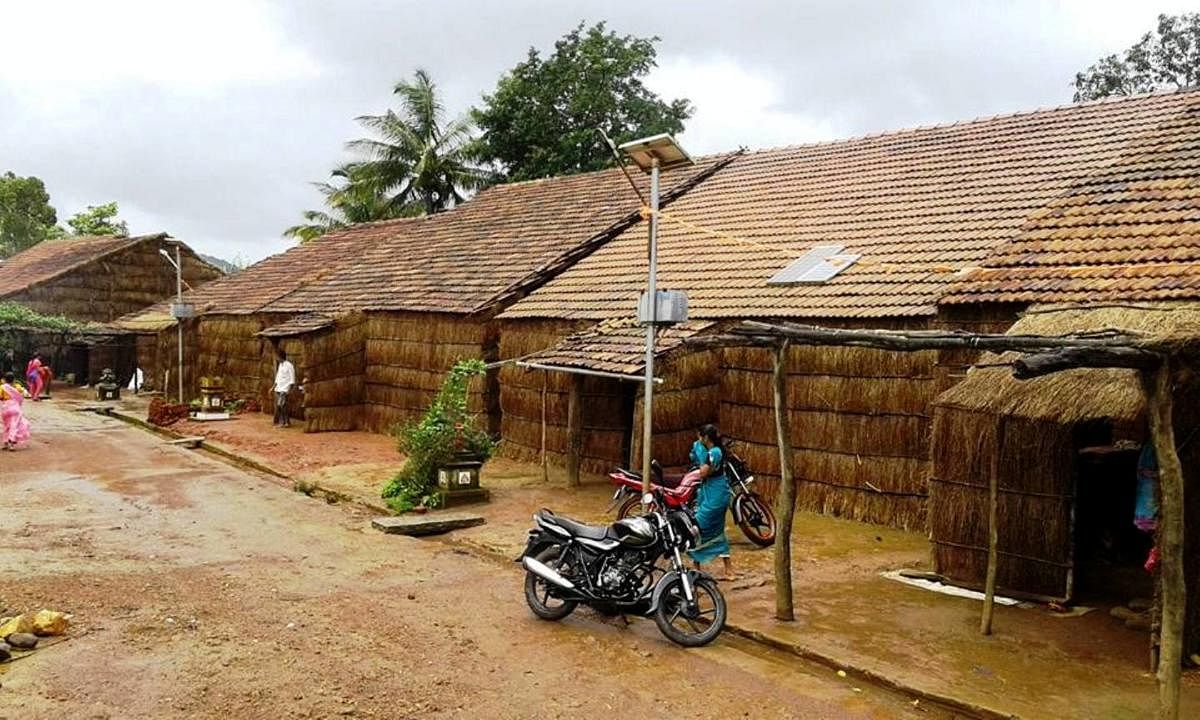

One of Bhairu Patil's childhood memories of Jamgaon, a hamlet within the Bhimgad forests in Belagavi, is that of his grandfather and his brothers building their house. Unlike the concrete urban home that Bhairu lives in now, this village home was resilient to the excess rain that their region receives.
Villages around Kankumbi and Bhimgad which are part of the Western Ghats in Belagavi's Khanapur taluk, receive nearly 8,000 mm of rainfall every year. In order to adapt to the climate and topography, the villagers here traditionally construct homes made of mud and other natural materials sourced from the nearby forest.
It is difficult to trace the origins of this distinctive construction technique of houses in this remote area on the Karnataka-Goa-Maharashtra border — the locals simply say they have learnt it from their ancestors. While some houses are small, others are big enough to have a front yard, back yard (Parsu), living room, kitchen, bedroom, an attic to store grains, cattle shed and a fireplace.
The uniqueness of these houses is that despite the prolonged monsoon and harsh cold, they are absolutely waterproof and warm inside; in the summers, the interiors remain cooler than the outdoors. Since locally available materials are used and people build these houses on their own, they are quite cost-effective and environmentally friendly.
Standing amid the green rice and ragi fields, they also add a rustic charm to the village landscape.
Process of house-making
These houses basically have walls made of mud mixed with thatch and then smeared with a mixture of cow dung and charcoal powder (till the sill) and cow dung and clay (called shedu) to give it a cohesive and smooth finish. The shedu gives the wall a yellow shade. But due to extended monsoons, these mud walls can become damp, so they are protected using screens made of grass (locally called ghargavat).
To begin with, the frames are made using local timber as per the outer dimension of the house. The frames are then systematically tied with three layers of tall grass (weed) called Khadda, abundantly available in the forest. The grass is secured using a creeper called Karvi sticks (Vel in local language). This creeper, when dried, becomes hard like bamboo and tightly holds the grass and the frame.
In the rainy season, the gap between the screen and the mud wall acts as a thermal insulator, keeping the house warmer and in the summers, the frames are kept on the western side to protect the walls from the heat.
“The entire roof structure is supported by jungle wood posts, rafters and a central ridge covered with karvi sticks instead of wooden battens. Further, this framework is covered with thatch (ghargavat) or black curved country tiles. Locally available cashew nut oil is applied to the wooden components in the roof, the superstructure and the wooden poles inserted in the ground, to protect it from termites and other insects,” explains Prof Amit Kinjawadekar of Manipal School of Architecture and Planning, MAHE, who has studied extensively about these homes.
The process of making these frames usually begins at the end of the summer season, and the lowest layer of the frame is replaced once in three years.
“Cattle are an integral part of the village community in this forest area and they can suffer from epidemics due to rain and chilly climatic conditions. However, these Karvi frames and the fireplace offer them protection,” said Vinod Prabhu, a farmer from Talegaon, a nearby village.
Becoming extinct
Despite the advantages, these houses have been affected by urbanisation and shortage of raw materials.
“Around 30 to 40 years back, there were several such earthen shelters in the region. The Karvi screens are lightweight and flexible. They are ecologically sustainable. However, over the years, people failed to understand its worth and began turning towards modern construction as this traditional technique is labour-intensive, time-consuming and needs regular maintenance. Yet, people use this for secondary purposes like cattle shed and firewood storage to this day,” says Amit, adding that efforts are needed to conserve such traditional methods of construction.